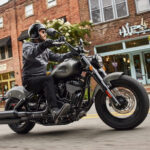Navigating the world of high-power electric bikes often brings up questions about battery and controller management. For enthusiasts pushing the limits with 2000w Electric Bikes, understanding these components is crucial for both performance and longevity. Let’s delve into some key considerations, especially when dealing with battery systems in this power class.
When you’re operating a 2000W electric bike, the battery and controller are under significant stress. It’s common to see 72V systems powering these bikes, as higher voltage can deliver the necessary power more efficiently. If your display reads 72V and your controller is also set to 72V, it’s likely you have a 72V system. However, the capacity and quality of the battery are equally important, if not more so, than voltage alone.
One critical aspect often overlooked is the Battery Management System (BMS). The BMS is the brain of your battery pack, protecting it from over-current, over-voltage, and other potentially damaging conditions. For a 2000W electric bike, especially if you’re using a 72V system, amperage draw can be substantial. If a typical 52V e-bike battery uses a 30A BMS, pushing a 72V system with the same controller settings could be risky, particularly if you’re using a battery from a less reputable manufacturer.
Consider this scenario: You have a controller set to 30A. If your BMS is also rated at 30A continuous, you’re operating at the very edge of your system’s capability. Many controllers have peak amperage settings that can briefly exceed the continuous rating. If your controller’s peak demand exceeds the BMS’s continuous rating, or if the BMS is not performing to its stated specification, it can lead to problems. The BMS might trip, cutting power to protect the battery, potentially leaving you stranded. This is more likely to happen during high-demand situations like climbing hills or accelerating hard, where your 2000W electric bike is drawing maximum power.
For example, imagine riding a 2000W dual-motor e-bike. Even with moderate controller settings, the combined peak draw could momentarily spike. If your BMS is undersized or unreliable, it might misinterpret these peaks as sustained over-current and shut down. This can be particularly concerning with batteries from less established brands, where component quality and BMS performance can be inconsistent.
To mitigate these risks with your 2000W electric bike, it’s generally advisable to reduce the controller’s amperage setting. Lowering it from 30A to 25A can provide a safety margin, reducing stress on both the BMS and the battery itself. While this might slightly reduce peak power, it can significantly improve the reliability and lifespan of your battery, especially if you have any doubts about its quality or the BMS performance. Investing in a high-quality battery with a robust BMS from a reputable supplier is a worthwhile consideration for any 2000W electric bike owner to ensure consistent performance and prevent unexpected shutdowns.


